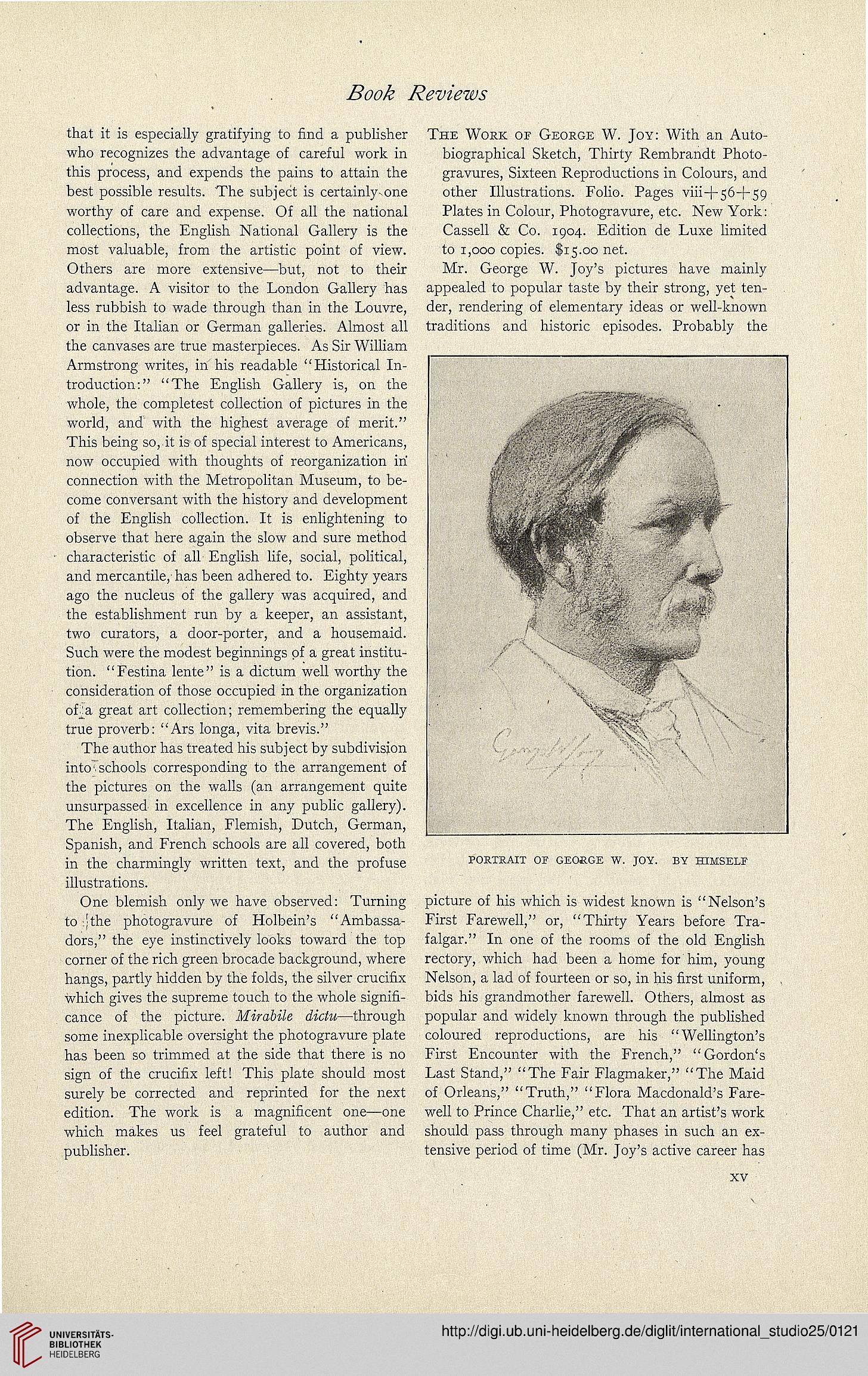that it is especially gratifying to find a publisher
who recognizes the advantage of careful work in
this process, and expends the pains to attain the
best possible results. The subject is certainly one
worthy of care and expense. Of all the national
collections, the English National Gallery is the
most valuable, from the artistic point of view.
Others are more extensive—but, not to their
advantage. A visitor to the London Gallery has
less rubbish to wade through than in the Louvre,
or in the Italian or German galleries. Almost all
the canvases are true masterpieces. As Sir William
Armstrong writes, in his readable "Historical In-
troduction:" "The English Gallery is, on the
whole, the completest collection of pictures in the
world, and with the highest average of merit."
This being so, it is of special interest to Americans,
now occupied with thoughts of reorganization in'
connection with the Metropolitan Museum, to be-
come conversant with the history and development
of the English collection. It is enlightening to
observe that here again the slow and sure method
characteristic of all English life, social, political,
and mercantile, has been adhered to. Eighty years
ago the nucleus of the gallery was acquired, and
the establishment run by a keeper, an assistant,
two curators, a door-porter, and a housemaid.
Such were the modest beginnings of a great institu-
tion. "Festina lente" is a dictum well worthy the
consideration of those occupied in the organization
of-a great art collection; remembering the equally
true proverb: "Ars longa, vita brevis."
The author has treated his subject by subdivision
into 'schools corresponding to the arrangement of
the pictures on the walls (an arrangement quite
unsurpassed in excellence in any public gallery).
The English, Italian, Flemish, Dutch, German,
Spanish, and French schools are all covered, both
in the charmingly written text, and the profuse
illustrations.
One blemish only we have observed: Turning
to (the photogravure of Holbein's "Ambassa-
dors," the eye instinctively looks toward the top
corner of the rich green brocade background, where
hangs, partly hidden by the folds, the silver crucifix
which gives the supreme touch to the whole signifi-
cance of the picture. —through
some inexplicable oversight the photogravure plate
has been so trimmed at the side that there is no
sign of the crucifix left! This plate should most
surely be corrected and reprinted for the next
edition. The work is a magnificent one—one
which makes us feel grateful to author and
publisher.
THE WORK OF GEORGE W. Joy: With an Auto-
biographical Sketch, Thirty Rembrandt Photo-
gravures, Sixteen Reproductions in Colours, and
other Illustrations. Folio. Pages viii-)-g6-)-S9
Plates in Colour, Photogravure, etc. New York:
Cassell & Co. 1904. Edition de Luxe limited
to 1,000 copies. $15.00 net.
Mr. George W. Joy's pictures have mainly
appealed to popular taste by their strong, yet ten-
der, rendering of elementary ideas or well-known
traditions and historic episodes. Probably the
PORTRAIT OF GEORGE W. JOY. BY HIMSELF
picture of his which is widest known is "Nelson's
First Farewell," or, "Thirty Years before Tra-
falgar." In one of the rooms of the old English
rectory, which had been a home for him, young
Nelson, a lad of fourteen or so, in his first uniform,
bids his grandmother farewell. Others, almost as
popular and widely known through the published
coloured reproductions, are his "Wellington's
First Encounter with the French," "Gordon's
Last Stand," "The Fair Flagmaker," "The Maid
of Orleans," "Truth," "Flora Macdonald's Fare-
well to Prince Charlie," etc. That an artist's work
should pass through many phases in such an ex-
tensive period of time (Mr. Joy's active career has
xv




